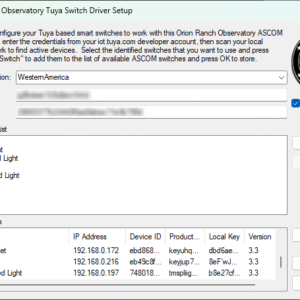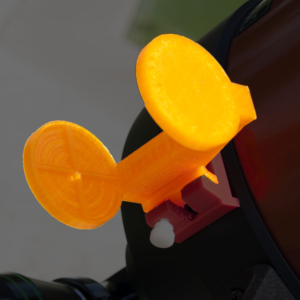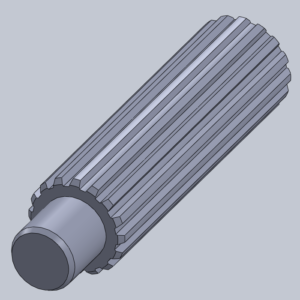Deep Space Products sells these neat looking vent replacement fans for the Celestron CPC series telescopes. While they have a rather confusing selection of choices depending on whether you have a newer (e.g. EDGE HD) or older model, wedge mounted or separate OTA, etc., most of the difference between the different stock vent configurations are two fans vs. three. For older scopes without vents there are options to drill your own holes and add theirs, but at that point, why not just add your own fan? There are a variety of color choices, but even there the ordering process is a bit disturbing, since you’re asked for a backup color in case they’re out of stock on the color you want. I went for the orange to complement my Celestron gear, and didn’t provide an alternate option. Luckily I got what I wanted.
The vents look pretty nice, and fit was decent, although not perfect, as far as hole alignment is concerned. I’m not sure whether to blame that on DSP or Celestron, although the Celestron covers don’t appear to have an interference problem with the screws. As far as the electrical connections through the back of the OTA, I found that process a bit hokey, with the supplied “Y” jumper cable being too short to route the cable around the clutch pins and focuser shaft, so it sits on the central baffle tube behind the mirror. That makes me rather nervous about the potential of pinching the wires.
  |
When I plugged the first fan in to my nominal 12V supply (typically 13.8V car battery replacement supply) I was rather disturbed and disappointed at the amount of vibration each fan had. Even installed, there’s a fair amount of vibration detectable when I rest my hand on the body of the OTA. Since I bought these to improve my imaging quality, I’m rather worried at the potential degradation due to the added vibration. I also don’t want to have to add a circuit to switch this on and off, nor lose the continuous circulation these are supposed to provide. Just to be sure it wasn’t the power supply, a created a regulated 12V cable specifically for these fans and while I could detect a minor drop in pitch, there was no net improvement in terms of the vibration.
I pulled the fans back out to send back and took a video of the vibration effects. By letting each fan just contact the surface of one of my tables, you can hear the whole assembly bouncing off the table top. Some of them rattle pretty good, and when you get them all going, the vibration at the far end of the table is impressive!

Here’s the greasy jumper wire Y cable that was riding up and down the center tube of the OTA. Now I need to re-grease the tube to put all that back!
 |
 |
Since I was already making the investment, I also sprang for their Fastar cooling fan that goes into the front of the SCT after removing the Fastar objective mirror. I did so only after contacting DSP to confirm that this would work for my 11″ NexStar GPS, since I don’t intend to be pulling the objective on the Edge CPC when I’m imaging remotely. This unit turned out to be even a bigger disappointment. Unlike other such solutions that come with a storage tray for the objective and are designed to actually ensure circulation through the OTA, this was just a pretty simple block of plastic with a fan attached to one side. The design assumes that you’re using it on a vented OTA, so it’s really useless for my NexStar GPS unless I open up the eyepiece hole and leave it open for stuff to fly up into. Without that, the fan would just sit there and cavitate without moving any air into the OTA.
 |
 |
 |
 |
So in all, I’m pretty disappointed in my purchase from Deep Space Products and in the lackluster response from Edward Thomas at DSP once he had my money. I certainly wouldn’t have bought the Fastar fan had I realized its limitations. The other components at least saved me the effort of printing my own parts, but I wouldn’t say I got my money’s worth.
As usual, there are more images in the gallery.














